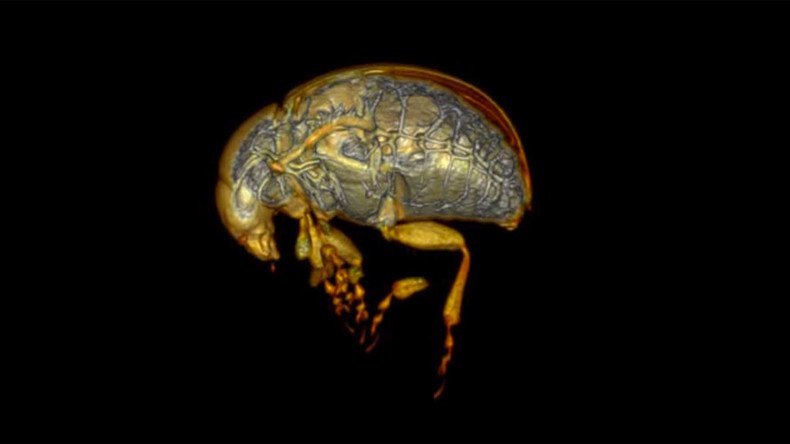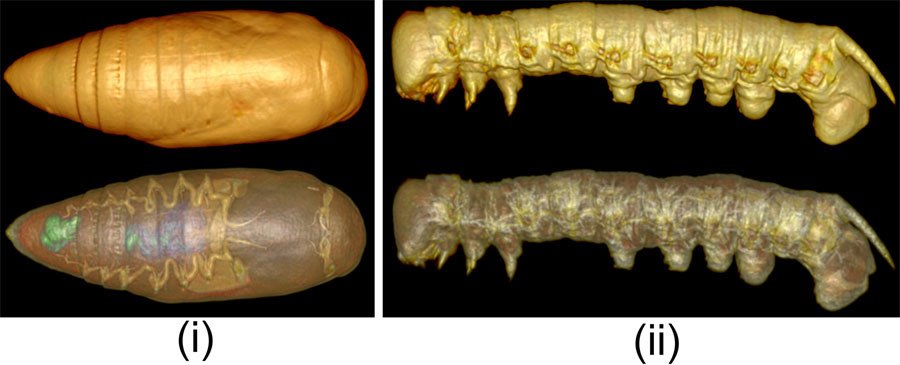Live insect guts captured in all their gruesome glory (IMAGES, VIDEO)

A new scanning system can map the internal organs of live insects in astonishing detail. Researchers say they were “awed” by the findings from the new imaging technique.
Conventional imaging methods typically require dissection of live bugs, meaning researchers can examine each individual insect only once.
However, the new scanning method, developed by biologists and imaging specialists from Western University in Canada, means individual bugs can be studied multiple times and in great detail.
READ MORE: Caterpillar cataclysm: ‘Exploding zombie virus’ on the rise, wildlife experts warn
“We essentially had snapshots, moments in time, when what we needed were dynamic images of insects’ internal development,” said Joanna Konopka, one of the research team, in a statement. “We thought, what would happen if we tried to image them live?”
The new method, detailed in the journal BioMed Central, exploits insects’ remarkable ability to survive without much oxygen, knocking the bugs out temporarily with carbon dioxide gas before scanning them in a tiny CT lab.
The bugs’ organs and internal structure can clearly be seen in the 3D images which show detail five times smaller than the width of a human hair.

“I was absolutely awed,” Konopka said. “I’m familiar with pictures and drawings in books but this gives us a wholly new perspective of what they are.”












